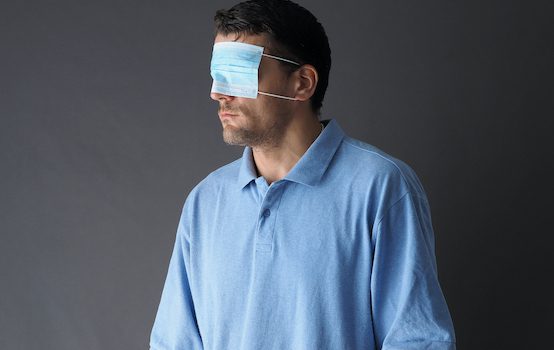It Was All Already Deeply Fake

You’ve probably heard about the danger of “deepfakes”—the use of artificial intelligence to help make deceptive video content. They were a favorite topic of speculation and fear in 2018, a simpler time.
You’ve also probably seen deepfake tech in action, maybe in the public service announcement video produced by comedian and filmmaker Jordan Peele that year, which appears to show former President Barack Obama saying things he wouldn’t say on camera. Obviously some other things have happened since 2018, but the fear of fake digital content has stuck around in the discourse, for understandable reasons. It is easy to produce and getting easier, and we are all sorting through more information than any of us can handle.
The fear of deepfakes is that we will no longer be able to believe our eyes. What if a video appears showing the president’s son engaged in obviously illegal and immoral behavior? What if the American voters believe it’s real? … Anyway, the problem with deepfake discourse is that it suggests, in its speculations about a future world in which what we are told by media and experts to be true is in fact false, that our present digital environment is one of evident factuality. This is, if one pauses for only a few seconds to reflect a bit, obviously false.
Fake news is real, and there’s not a softer way to put it. That isn’t actually a new reality, of course, but let’s consider just the last couple years, working backwards.
We were told that masks are an important part of stopping the spread of COVID-19 and that there was no way the virus could come from a laboratory. Now FOIA’d emails from Anthony Fauci confirm what many knew already, that masks—statements for and against—were always part of a strategy of “noble lies” or supposedly beneficial deception on the part of the public health bureaucracy; plus, epidemiologists, virologists, and science popularizers have come out to say that the lab-leak theory for COVID-19’s origins has more than legs, and there’s clear evidence that we the citizens of the U.S.A. probably funded its development with our tax dollars.
We were told that President Donald Trump cleared Lafayette Square park during protests last year so that he could take an awkward picture holding a Bible. Now an Inspector General’s report from the Department of the Interior shows that the park police cleared the square on schedule in order to set up fencing in response to the violence and destruction of (our, American citizens’) property.
We were told that Russia had offered bounties for the deaths of U.S. soldiers in Afghanistan; this was widely reported as evidence of a failure or Putin-favoring weakness on the part of Trump. Now we have been told that the U.S. intelligence community has “walked back” that story.
We were told that Nick Sandmann and his fellow Covington Catholic high school students harassed a noble Native American man at the national March for Life. Now we know, and have had confirmed in court, that quite the opposite occurred—that it was Nathan Phillips who created conditions for an incriminating but misleading video to be produced depicting his interaction with Sandmann.
You cannot believe your eyes. There are an almost limitless number of examples in which the outrage cycle of the week or month or year has proven to be totally false, even the direct opposite of reality. Deepfakes distill what is already true: The digital is an abyss of “misinformation,” of a simulacrum and not the thing itself. You must accept, for your own sanity, that everything is lying to you, when you go online or watch television or even tune in to something as simple and seemingly wholesome as the over-air radio. You might be able to trust people—they have an ethos, an individual virtue status—but you cannot trust “information,” data and words processed without, as your math teacher would say, showing the work.
What is to be done? Touch grass. Go outside. Log off more often. As we face an increasingly artificial world, in which the spaces we live in are more and more constructed by algorithms and people who do not care about us but have an agenda, we must reacquaint ourselves with the baseline data of our physical environments and the people who we should categorize as “neighbor” and “family.” The only way to avoid playing the fool is to find the wisdom there is in dirt and human flesh, which our civilization has long described as “common sense.” Its place is in relationship and physical space, in walks hand-in-hand and the labored breath of cresting a tall hill. It is not to be found in “the news.”
There is some distress of late amongst the professional talkers of life online or on the airwaves about conspiracy theories and extremism. The experts and the media have no one to blame but themselves. They have tried to be too clever by half, believed themselves able to manipulate public opinion in not only the common appetitive ways of Madison Avenue and political fervor, but on questions of fundamental health and reality, on complex questions of prudence. The consent they have sought to manufacture, however, can only be, in a nation of free people engaged in self-government, arrived at after long and public deliberation, the careful weighing of prior realities and future consequences, and the essential question of who we are, as citizens, as Americans, and as human beings.
[please note: I erroneously described the allegations of Russian bounties on American soldiers as having been about the Syria conflict, rather than Afghanistan, at the time of publication. I regret the error, and wish to show my work.]
Comments